Healthcare Provider Update: Healthcare Provider Information for Aetna Aetna, part of the CVS Health family, has been a key player in the Affordable Care Act (ACA) marketplace, providing health insurance plans to individuals and families. However, significant changes are on the horizon for 2026, as Aetna will exit the ACA marketplace in 17 states, impacting approximately 1 million members. This withdrawal is attributed to the company's challenges in maintaining competitiveness and providing value in a rapidly evolving healthcare landscape. Potential Healthcare Cost Increases in 2026 As the healthcare landscape shifts, substantial premium hikes are anticipated for those enrolled in ACA marketplace plans, with projections of up to 75% increases in out-of-pocket costs due to the potential loss of enhanced federal subsidies. In some states, insurers have filed for rate increases exceeding 60%, driven by surging medical costs and the expiration of premium tax credits established under the American Rescue Plan. For Aetna's former members, this change further complicates their healthcare landscape as they seek new insurance options amid heightened financial pressures. Click here to learn more

With 2021 wrapped up and going into the new year, the IRS just released Revenue Procedure 2021-45 and Notice 2021-61 which detail the tax changes and cost of living adjustments for 2022. The main points of this new release that will most likely affect Aetna employees would be:
- This year, the tax filing deadline is on April 18, instead of the typical April 15.
- The standard deduction for married couples filing jointly for tax year 2022 rises to $25,900 up $800 from the prior year.
- For single taxpayers and married individuals filing separately, the standard deduction rises to $12,950 for 2022, up $400, and for heads of households, the standard deduction will be $19,400 for tax year 2022, up $600.
Also, the personal exemption for tax year 2022 remains at 0, as it was for 2021. This elimination of the personal exemption was a provision in the Tax Cuts and Jobs Act.
If you experienced a job change, retirement or lapse in employment from Aetna, the “lookback” rule may be an important option to consider when filing taxes this year. You’ll also have the option to use your 2019 earned income for your 2021 return thanks to changes from the American Rescue Plan Act. This rule is mainly used for calculation of the Earned Income Tax Credit and the Child Tax Credit.
Remote workers employed by Aetna might face double taxation on state taxes. Due to the pandemic, many employees moved back home which could have been outside of the state where they were employed. Last year, some states had temporary relief provisions to avoid double taxation of income, but many of those provisions have expired. There are only six states that currently have a ‘special convenience of employer’ rule: Connecticut, Delaware, Nebraska, New Jersey, New York, and Pennsylvania. If you work remotely for Aetna, and if you don't currently reside in those states, consult with your tax advisor if there are other ways to mitigate the double taxation.
Retirement account contributions: Contributing to your Aetna 401k plan can cut your tax bill significantly, and the amount you can save has increased for 2022. In 2022, the IRS has raised the contribution limit for a 401k to $20,500 - up by $1,000. Meanwhile, Aetna workers who are older than 50 years old are eligible for an extra catch-up contribution of $6,500.
There are important changes for the Earned Income Tax Credit (EITC) that you, as a taxpayer employed by Aetna, should know:
- The income threshold has been increased for single filers with no children; the American Rescue Plan Act temporarily boosted it from $543 to $1,502 in 2021; this expansion has not been carried over to the 2022 tax year.
- Married taxpayers filing separately can qualify: You can claim the EITC as a married filing separately if you meet other qualifications. This wasn't available in previous years.
Increased deduction for cash charitable contributions: In years past, the threshold was $300 for both single and joint filers, but in 2022 that changed to $300 for single filers and up to $600 for joint filers.
Child Tax Credit changes:
- A $2,000 credit per dependent under age seventeen..
- Income thresholds of $400,000 for married couples and $200,000 for all other filers (single taxpayers and heads of households).
- A 70 percent, partial refundability affecting individuals whose tax bill falls below the credit amount.
2022 Tax Brackets
-png.png?width=575&name=image%20(18)-png.png)
Inflation reduces purchasing power over time as the same basket of goods will cost more as prices rise. In order to maintain the same standard of living throughout your retirement after leaving Aetna, you will have to factor rising costs into your plan. While the Federal reserve strives to achieve 2% inflation rate each year, in 2021 that rate shot up to 7% a drastic increase from 2020’s 1.4%. While prices as a whole have risen dramatically, there are specific areas to pay attention to if you are nearing or in retirement from Aetna, like healthcare. Many Aetna corporate retirees depend on Medicare as their main health care provider and in 2022 that healthcare out-of-pocket premium is set to increase by 14.5%. In addition to Medicare increases, the cost of over-the-counter medications is also projected to increase by at least 10%. The Employee Benefit Research Institute (ERBI) found in their 2022 report that couples with average drug expenses would need $296,000 in savings just to cover those expenses in retirement. It is crucial to take all of these factors into consideration when constructing your holistic plan for retirement from Aetna.
*Source: IRS.gov, Yahoo, Bankrate
Featured Video
Articles you may find interesting:
- Corporate Employees: 8 Factors When Choosing a Mutual Fund
- Use of Escrow Accounts: Divorce
- Medicare Open Enrollment for Corporate Employees: Cost Changes in 2024!
- Stages of Retirement for Corporate Employees
- 7 Things to Consider Before Leaving Your Company
- How Are Workers Impacted by Inflation & Rising Interest Rates?
- Lump-Sum vs Annuity and Rising Interest Rates
- Internal Revenue Code Section 409A (Governing Nonqualified Deferred Compensation Plans)
- Corporate Employees: Do NOT Believe These 6 Retirement Myths!
- 401K, Social Security, Pension – How to Maximize Your Options
- Have You Looked at Your 401(k) Plan Recently?
- 11 Questions You Should Ask Yourself When Planning for Retirement
- Worst Month of Layoffs In Over a Year!
- Corporate Employees: 8 Factors When Choosing a Mutual Fund
- Use of Escrow Accounts: Divorce
- Medicare Open Enrollment for Corporate Employees: Cost Changes in 2024!
- Stages of Retirement for Corporate Employees
- 7 Things to Consider Before Leaving Your Company
- How Are Workers Impacted by Inflation & Rising Interest Rates?
- Lump-Sum vs Annuity and Rising Interest Rates
- Internal Revenue Code Section 409A (Governing Nonqualified Deferred Compensation Plans)
- Corporate Employees: Do NOT Believe These 6 Retirement Myths!
- 401K, Social Security, Pension – How to Maximize Your Options
- Have You Looked at Your 401(k) Plan Recently?
- 11 Questions You Should Ask Yourself When Planning for Retirement
- Worst Month of Layoffs In Over a Year!
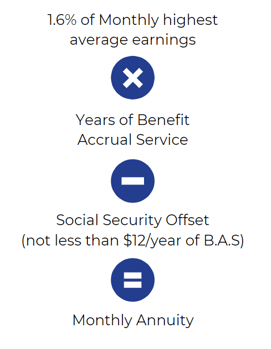
Highest Average Earnings is the monthly average of your regular earnings for the 36 consecutive months in which they’re the highest.
In most cases, this will be the sum of your last 36 months divided by 36.
The applicable interest rate is a separate average of each of the three segment rates for the fifth, fourth and third months preceding your annuity start date. The three segment rates are calculated by the IRS according to regulations that are also part of the Pension Protection Act of 2006 and reflect the yields of short-, mid-, and long-term corporate bonds. (Note: Chevron also has Legacy Unocal and Legacy Texaco Retirement Plans)
Different Plans
Similar to Chevron, AT&T has many different plans available. With AT&T, they have different pension plan formulas for management & non-management. Lets look at a sample non-management plan.
AT&T non-management employees have their own Craft/non-management pension plan. Let's take a look at a pension example for a gentleman by the name of Joe Smith who is hourly and using the Craft/non-management pension plan.
In 1990, Joe is hired by AT&T and participates in the Craft Pension Plan:
Craft Pension Plan
-
Craft has a defined benefit plan that uses pension bands.
-
A pension band determines your benefits based on your job title/grade level/occupation.
- Joe will receive a monthly dollar amount into his account for each year of service.
-
Joe's benefit (pension band may change yearly).
-
A pension band determines your benefits based on your job title/grade level/occupation.
Rising Interest Rates e-book
https://www.irs.gov/newsroom/irs-provides-tax-inflation-adjustments-for-tax-year-2022
https://news.yahoo.com/taxes-2022-important-changes-to-know-164333287.html
https://www.nerdwallet.com/article/taxes/federal-income-tax-brackets
https://www.the-sun.com/money/4490094/key-tax-changes-for-2022/
https://www.bankrate.com/taxes/child-tax-credit-2022-what-to-know/
How does Aetna Inc.'s frozen pension plan affect employees' eligibility for benefits, and what specific criteria must current employees meet to qualify for any benefits from the Retirement Plan for Employees of Aetna Inc.?
Eligibility for Benefits: Aetna Inc.'s pension plan has been frozen since January 1, 2011, meaning no new pension credits are accruing. Employees who were participants before this date remain eligible for benefits but cannot accrue additional pension credits. To qualify for benefits, participants need to have been vested, which generally occurs after three years of service(PensionSPD).
In what ways can employees at Aetna Inc. transition their pension benefits if they leave the company, and what implications does this have for their tax liabilities and retirement planning?
Transitioning Pension Benefits: If employees leave Aetna, they can opt for a lump-sum distribution or an annuity. Employees can roll over their lump-sum payments into an IRA or other tax-qualified plans to avoid immediate taxes. However, direct rollovers must follow the tax-qualified plan's rules. If not rolled over, employees are subject to immediate tax and potential penalties(PensionSPD).
What steps should an Aetna Inc. employee take if they become disabled and wish to continue receiving pension benefits, and how does the company's policy on disability impact their future retirement options?
Disability and Pension Benefits: Employees who become totally disabled and qualify for long-term disability can continue participating in the pension plan until their disability benefits cease or employment is terminated. No additional pension benefits accrue after December 31, 2010, but participation continues under the plan until employment formally ends(PensionSPD).
Can you explain the implications of the plan amendment rights that Aetna Inc. retains, particularly concerning any potential changes in the pension benefits and what this could mean for employee planning?
Plan Amendment Rights: Aetna reserves the right to amend or terminate the pension plan at any time. If the plan is terminated, participants will still receive benefits accrued up to the date of termination, protected by ERISA. Any future changes could impact employees' planning and retirement options(PensionSPD).
How does the IRS's annual contribution limits for pension plans in 2024 interact with the provisions of the Retirement Plan for Employees of Aetna Inc., and what considerations should employees keep in mind when planning their retirement contributions?
IRS Contribution Limits: The IRS sets annual contribution limits for pension plans, including defined benefit plans. In 2024, employees should ensure that their pension contributions and tax planning strategies align with these limits and the provisions of Aetna's pension plan(PensionSPD).
What are the options available to Aetna Inc. employees regarding pension benefit withdrawal, and how can they strategically choose between a lump-sum distribution versus an annuity option?
Withdrawal Options: Aetna employees can choose between a lump-sum distribution or various annuity options when withdrawing pension benefits. The lump-sum option allows for immediate access to funds, while annuities provide monthly payments over time, offering a more stable income stream(PensionSPD).
How does Aetna Inc. ensure compliance with ERISA regulations concerning the rights of employees in the retirement plan, and what resources are available for employees to understand their rights and claims procedures?
ERISA Compliance: Aetna complies with ERISA regulations, ensuring employees' rights are protected. Resources are available through the Plan Administrator and myHR, providing information on claims procedures, plan rights, and how to file appeals if necessary(PensionSPD).
What documentation should employees of Aetna Inc. be aware of when applying for their pension benefits, and how can they ensure that they maximize their benefits based on their years of service?
Documentation for Benefits: Employees should retain service records and review their benefit statements to ensure they receive the maximum pension benefits. They can request additional documents and assistance through myHR to verify their years of service and other relevant criteria(PensionSPD).
How do changes in interest rates throughout the years affect the annuity payments that employees at Aetna Inc. might receive upon retirement, and what strategies can they consider to optimize their retirement income?
Impact of Interest Rates on Annuities: Interest rates significantly affect annuity payments. Higher interest rates increase the monthly annuity amount. Employees should consider the timing of their retirement, especially at the end of the year, when interest rates for the following year are announced(PensionSPD).
If employees want to learn more about their pension options or have inquiries regarding the Retirement Plan for Employees of Aetna Inc., what are the best channels to contact the company, and what specific resources does Aetna provide for assistance?
Contact for Pension Inquiries: Employees can contact myHR at 1-888-MY-HR-CVS (1-888-694-7287), selecting the pension menu option for assistance. Aetna also provides detailed resources through the myHR website, helping employees understand their pension options and benefits(PensionSPD).
/General/General%204.png?width=1280&height=853&name=General%204.png)





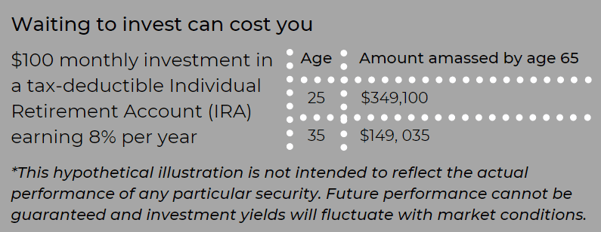

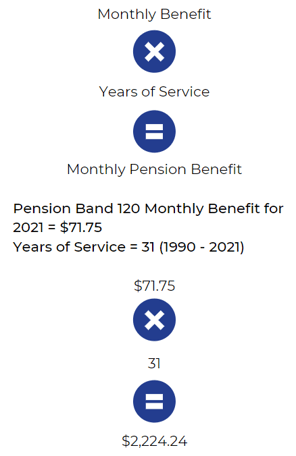

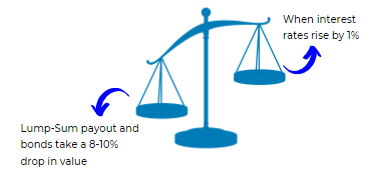



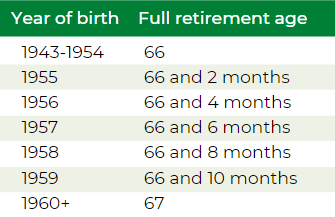

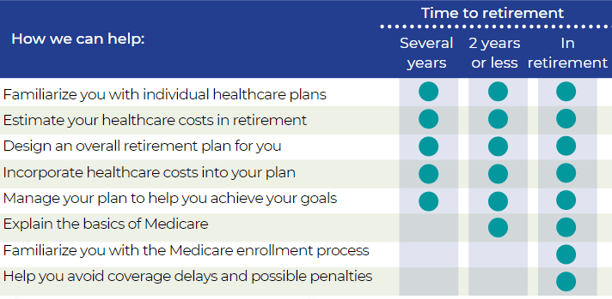







-2.png?width=300&height=200&name=office-builing-main-lobby%20(52)-2.png)









.webp?width=300&height=200&name=office-builing-main-lobby%20(27).webp)


-2.png)









.webp)